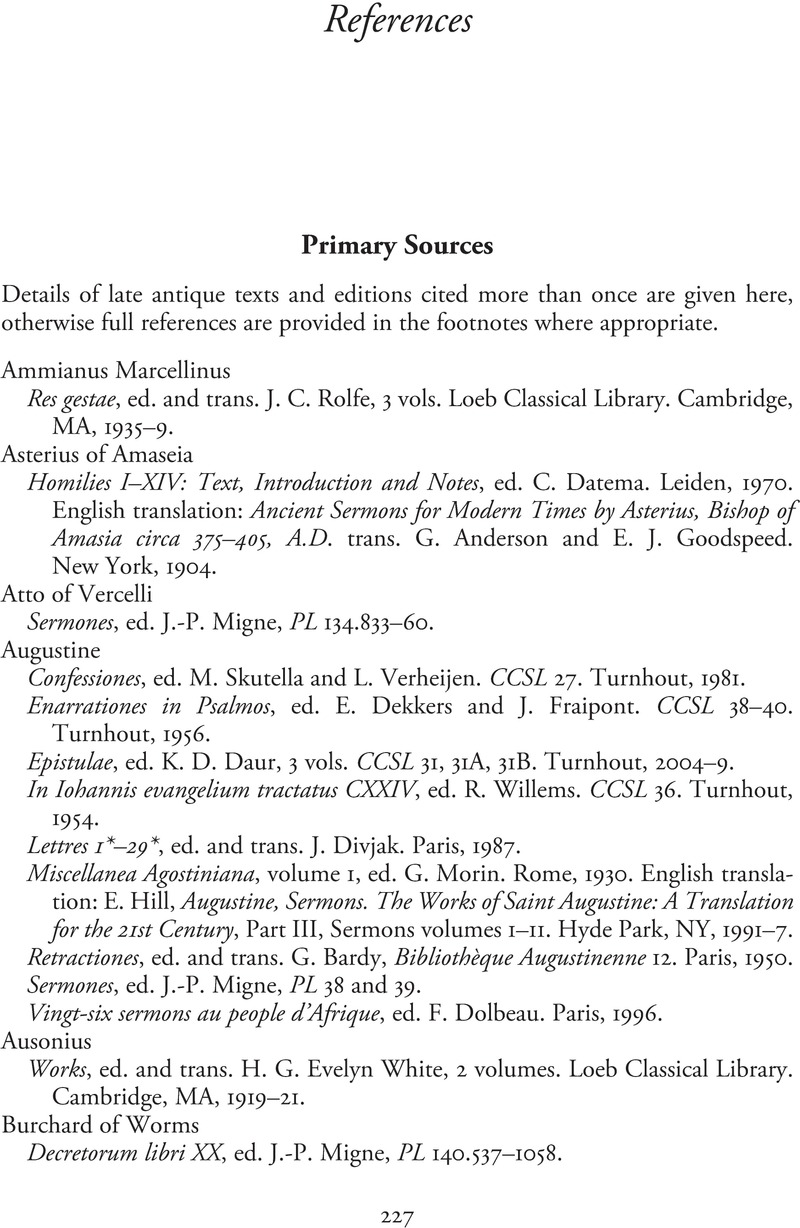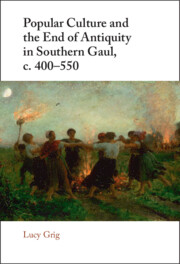Book contents
- Popular Culture and the End of Antiquity in Southern Gaul, c. 400–550
- Popular Culture and the End of Antiquity in Southern Gaul, c. 400–550
- Copyright page
- Contents
- Figures
- Maps
- Acknowledgements
- Abbreviations
- Maps
- Chapter 1 Introduction
- Chapter 2 Urban Contexts for Popular Culture in an Age of Transformation
- Chapter 3 Popular Culture, Society and Economy
- Chapter 4 Christianizing Popular Culture
- Chapter 5 An Alternative View
- Chapter 6 The Kalends of January
- Chapter 7 Conclusions
- References
- Index
- References
References
Published online by Cambridge University Press: 15 March 2024
- Popular Culture and the End of Antiquity in Southern Gaul, c. 400–550
- Popular Culture and the End of Antiquity in Southern Gaul, c. 400–550
- Copyright page
- Contents
- Figures
- Maps
- Acknowledgements
- Abbreviations
- Maps
- Chapter 1 Introduction
- Chapter 2 Urban Contexts for Popular Culture in an Age of Transformation
- Chapter 3 Popular Culture, Society and Economy
- Chapter 4 Christianizing Popular Culture
- Chapter 5 An Alternative View
- Chapter 6 The Kalends of January
- Chapter 7 Conclusions
- References
- Index
- References
Summary

- Type
- Chapter
- Information
- Publisher: Cambridge University PressPrint publication year: 2024



